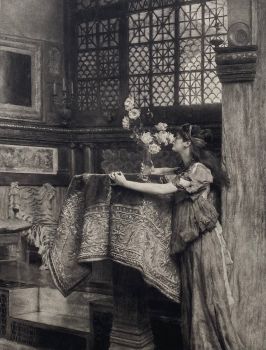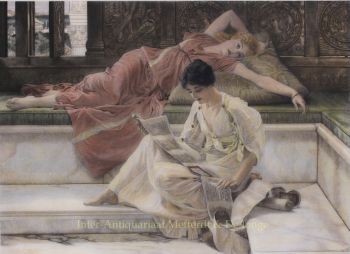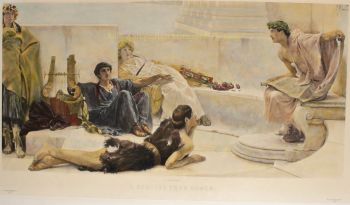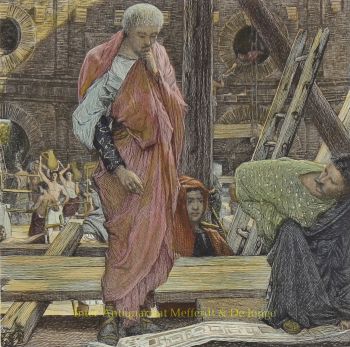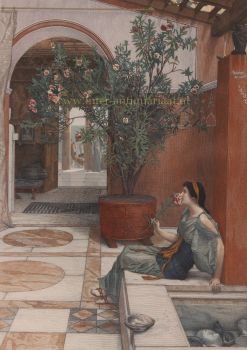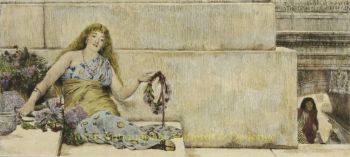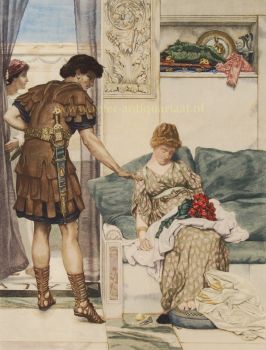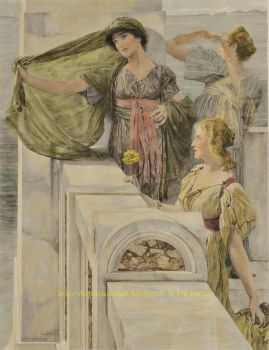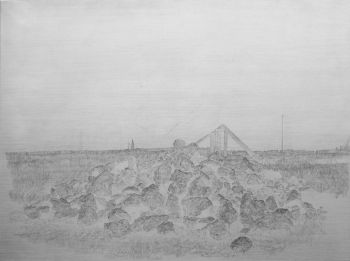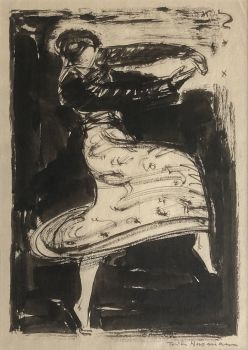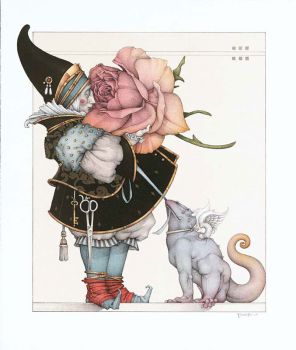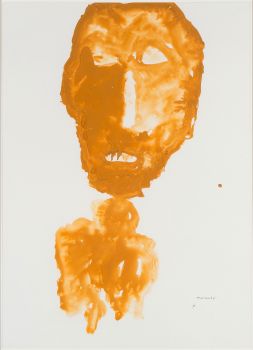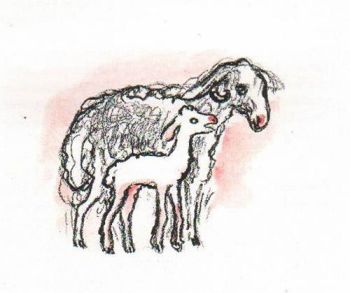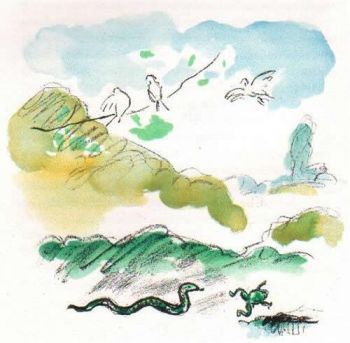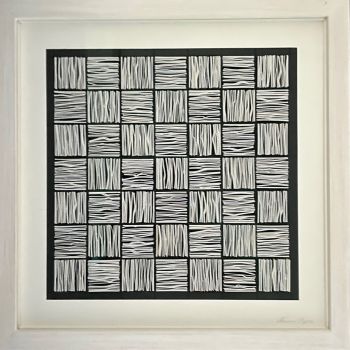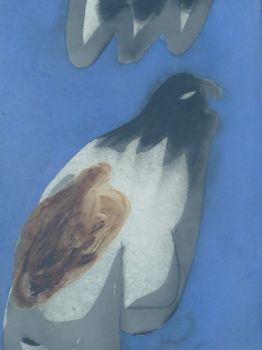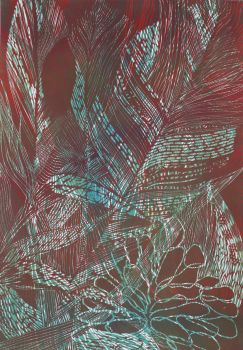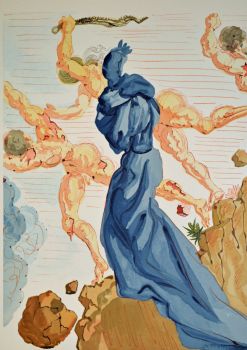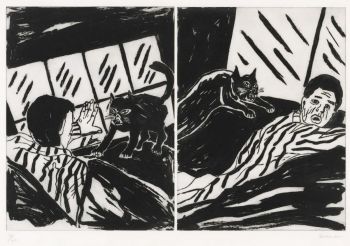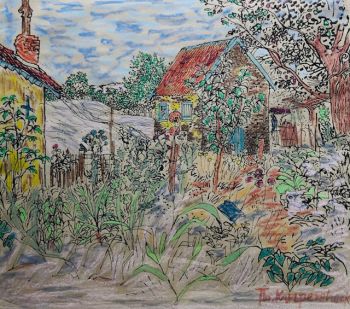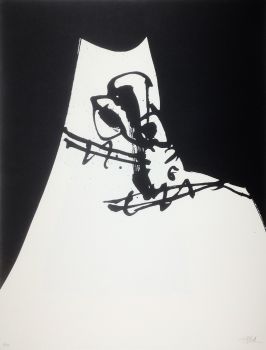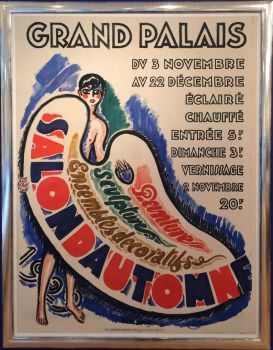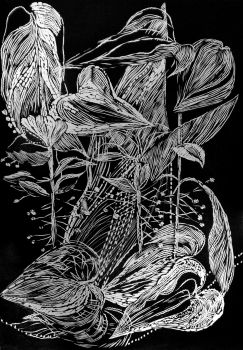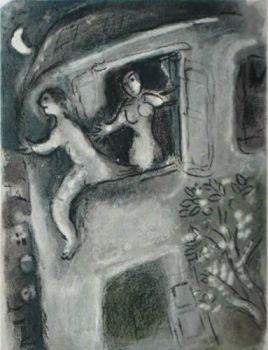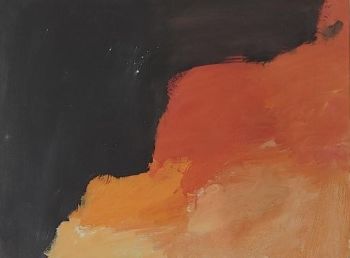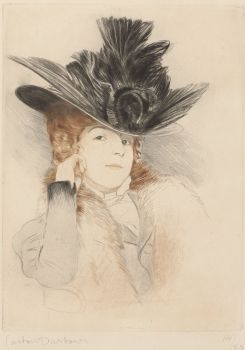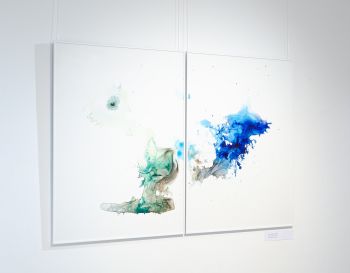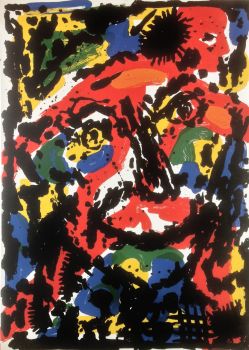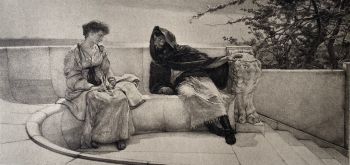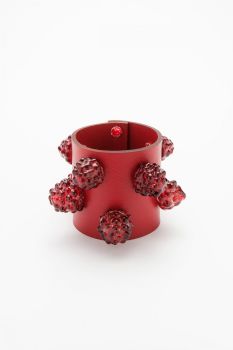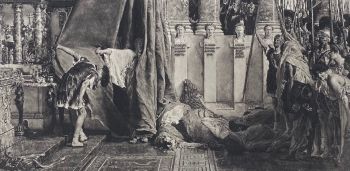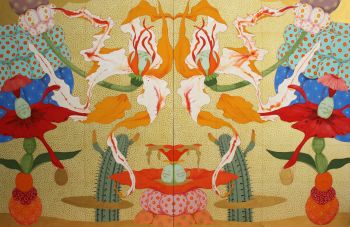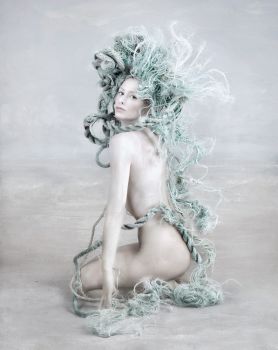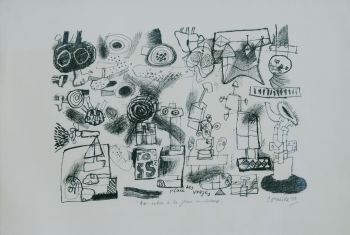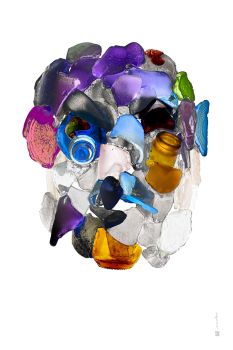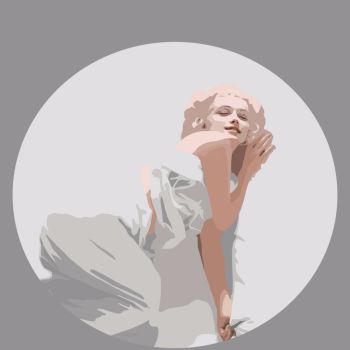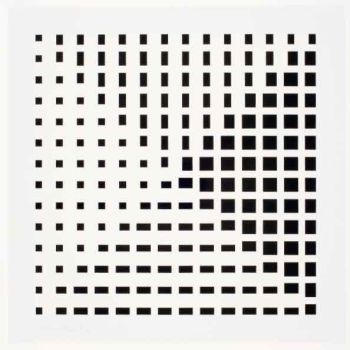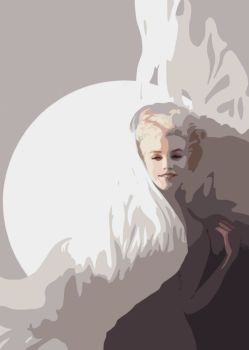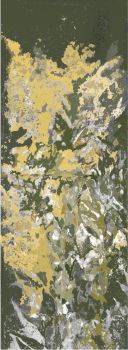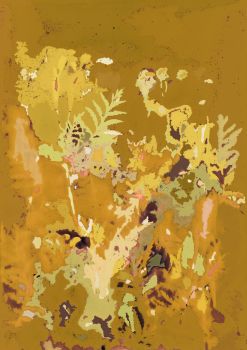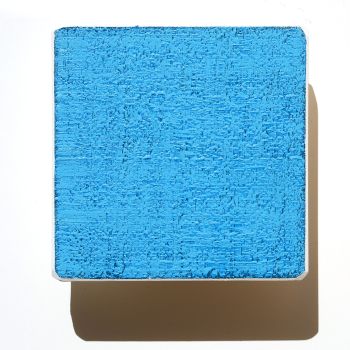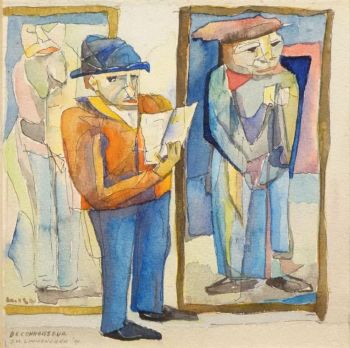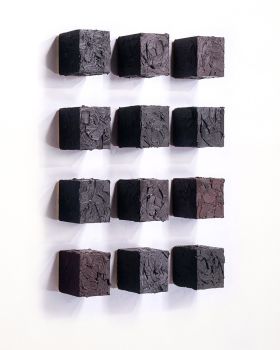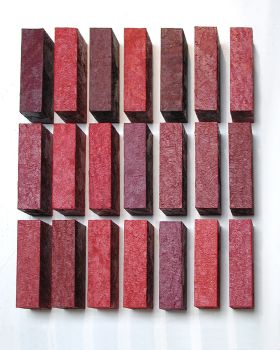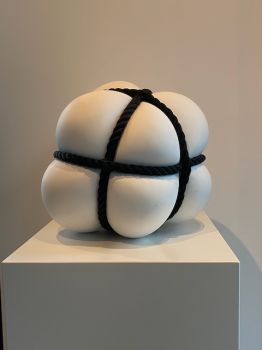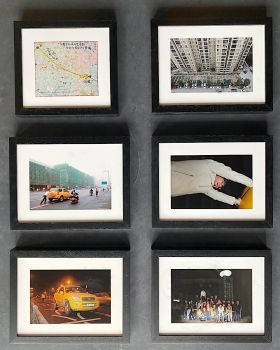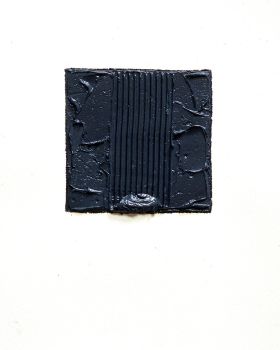"Spring" (original photogravure/ print, signed and hand coloured) 1894
Lawrence Alma-Tadema
HeliografiaImpressão em papel Fine ArtFoto litográficaImpressão fotográfica
89 ⨯ 39 cm
Preço em pedido
Gallerease Selected
- Sobre arte
"Spring", engraving/ heliogravure / photogravure/ print) made in 1894 by the Berlin Photographic Co. after the painting (Opus CCCXXIV) by Sir Lawrence Alma-Tadema. Handsigned by Alma-Tadema in pencil lower left. Coloured by hand in the same period. Dimensions: 89 x 39.5 cm. In original Victorian frame. Spring is thought to revolve around a procession during the Floralia, a flower festival held in the early Roman Empire from April 28 to 3 May. During the festival, Flora, the goddess of flowers and plants, was central. The painting is one of Alma-Tadema's most famous and ambitious works. The cheerful procession descends from the Palatine Hill. Servants of the Temple of Flora play the tambourine and flute. Behind them, under the canopy, is a bearded priest, with the features of Alma-Tadema herself. Spectators throw flowers abundantly from the roofs of the marble palaces. On the list of the new the engraving is a verse by poet A.C. Swinburne: In a land of bright colors and stories, In a region of shadowless hours, Where the earth has a garment of glory, And a murmur of musical flowers. The work's setting is fictional, bringing together architectural details from a wide variety of sources, including the Pompeii mural in the balcony at the top of the stairs and the frieze of warring centaurs from the temple of Apollo at Bassae on the building to the left. Halfway through the procession, two statues of Satyrs are carried, with a basket of fruit in their hand and Dionysos as a child on their shoulder as a personification of the growing power of the earth. Spring Alma-Tadema was awarded the Grand Prix for the painting at the World Exhibition in Paris in 1900. The work was highly praised by critics at the time, and today it is one of the J. Paul Getty Museum's best-loved paintings. The painting's first owner, Robert Mendelssohn-Bartholdy from Berlin, lent the work to Empress Friedrich (the wife of the late Emperor Friedrich III of Germany), who hung it in her bedroom to recover after an illness. One reviewer wrote: "[The painting] not only appeals to the viewer's sense of beauty, it also makes him look at it positively."
- Sobre artista
Lawrence Alma-Tadema é um dos artistas românticos mais renomados da Grã-Bretanha do final do século XIX. Ele nasceu na Holanda como Laurens Tadema, filho de tabelião da família. Mais tarde, como ele tentou fazer seu nicho no mundo da arte, ele mudou a grafia de seu primeiro nome para o mais inglês "Lawrence" e incluiu seu nome do meio "Alma" como parte de seu sobrenome, para que ele fosse listado entre os “A” em catálogos de exposições. Quando criança, foi decidido que Alma-Tadema seguiria a carreira de advogado, mas ele sofreu um colapso mental e físico quando tinha quinze anos. Ele foi diagnosticado como tuberculoso, com pouco tempo de vida e, portanto, livre para seguir uma vida de lazer e prazer. Deixado por conta própria, ele decidiu estudar arte, já que sua mãe havia pago aulas de arte em sua infância e era um de seus interesses. Ele recuperou a saúde e estudou na Royal Academy of Antwerp em 1852, onde ganhou vários prêmios respeitados. Seu primeiro trabalho importante foi exibido em 1858 e ganhou muitos elogios da crítica, criando sensação no mundo da arte. Em 1862, ele estabeleceu seu próprio estúdio para seguir sua carreira individual na arte. Em 1869, Alma-Tadema perdeu sua esposa de seis anos para a varíola. Desconsolado e deprimido, ele parou de pintar e sua saúde foi piorando. Orientado por seu médico, ele viajou para a Inglaterra para um diagnóstico médico, onde foi convidado para a casa de um colega pintor, Ford Madox Brown. Foi aqui que ele pôs os olhos em Laura Theresa Epps, então com 17 anos, e se apaixonou perdidamente por ela. Alma-Tadema aproveitou a eclosão da guerra franco-prussiana para se mudar para a Inglaterra, onde não perdeu tempo contatando Laura e contratando-a em aulas particulares de arte. Foi durante uma dessas aulas que Alma-Tadema propôs a proposta, e eles se casaram pouco depois. Alma-Tadema tinha 34 anos e a noiva 18.Alma-Tadema passou a próxima parte de sua vida viajando pela Europa e desfrutando do sucesso contínuo de suas pinturas. Como homem, suas explosões de mau humor foram amenizadas por sua personalidade extrovertida e calorosa e seu senso de travessura. Trabalhador perfeccionista e obsessivo, ele também inovou uma nova técnica de numeração, que dificultava a falsificação de obras não originais por falsificadores. Em seus últimos anos, embora sua produção artística tenha diminuído um pouco, ele teve sucesso contínuo, tornando-se um dos pintores mais ricos do século XIX. Ele foi nomeado cavaleiro na Inglaterra em 1899. Em 1912, Alma-Tadema viajou para a Alemanha para se submeter a um tratamento para úlcera estomacal e morreu na Alemanha aos 76 anos. Após sua morte, seu trabalho foi quase todo ignorado. Devido às mudanças drásticas ocorrendo na arte, o gênio artístico de Alma-Tadema não voltaria aos olhos do público até a década de 1960. Seu meticuloso trabalho desde então foi usado como fonte de material para dezenas de filmes de Hollywood.
Você está interessado em comprar esta obra de arte?
Related artworks
- 1 - 4 / 12
Artista Desconhecido
Pulseira de diamante do século 18 com entalhes de 2.000 anos1790
€ 23.000Adin Fine Antique Jewellery
 Com curadoria de
Com curadoria deDanny Bree
1 - 4 / 24- 1 - 4 / 24
Artista Desconhecido
Dois Centauros, França ou Itálialate 18th
Preço em pedidoRobert Schreuder Antiquair
1 - 4 / 24- 1 - 4 / 24
Yoko Ono
YOKO ONO: "ARISING" SIGNED BOOK PLUS SMALL ARTWORK 2010 - 2014
Preço em pedidoGallerease Selected
1 - 4 / 12
















